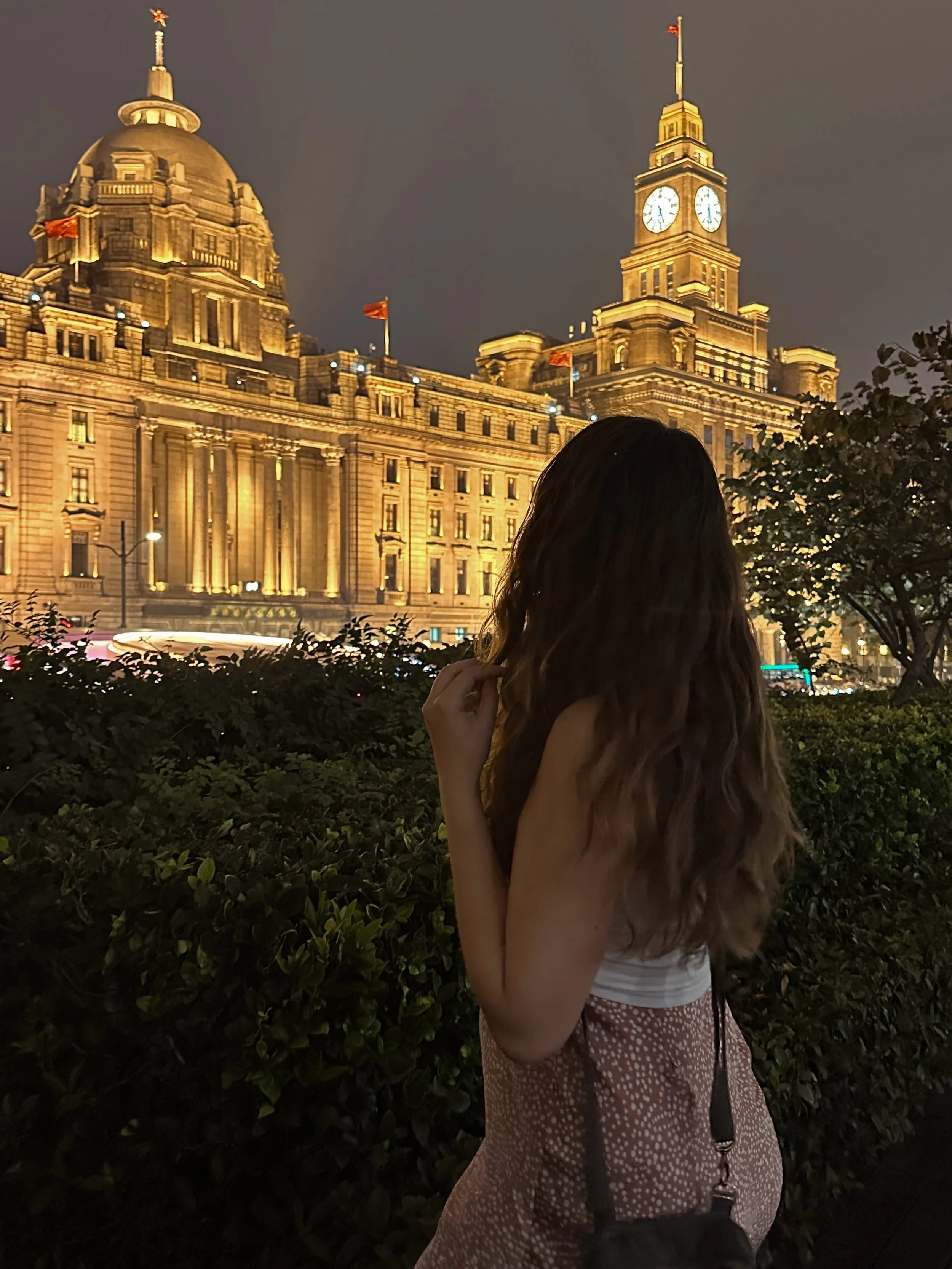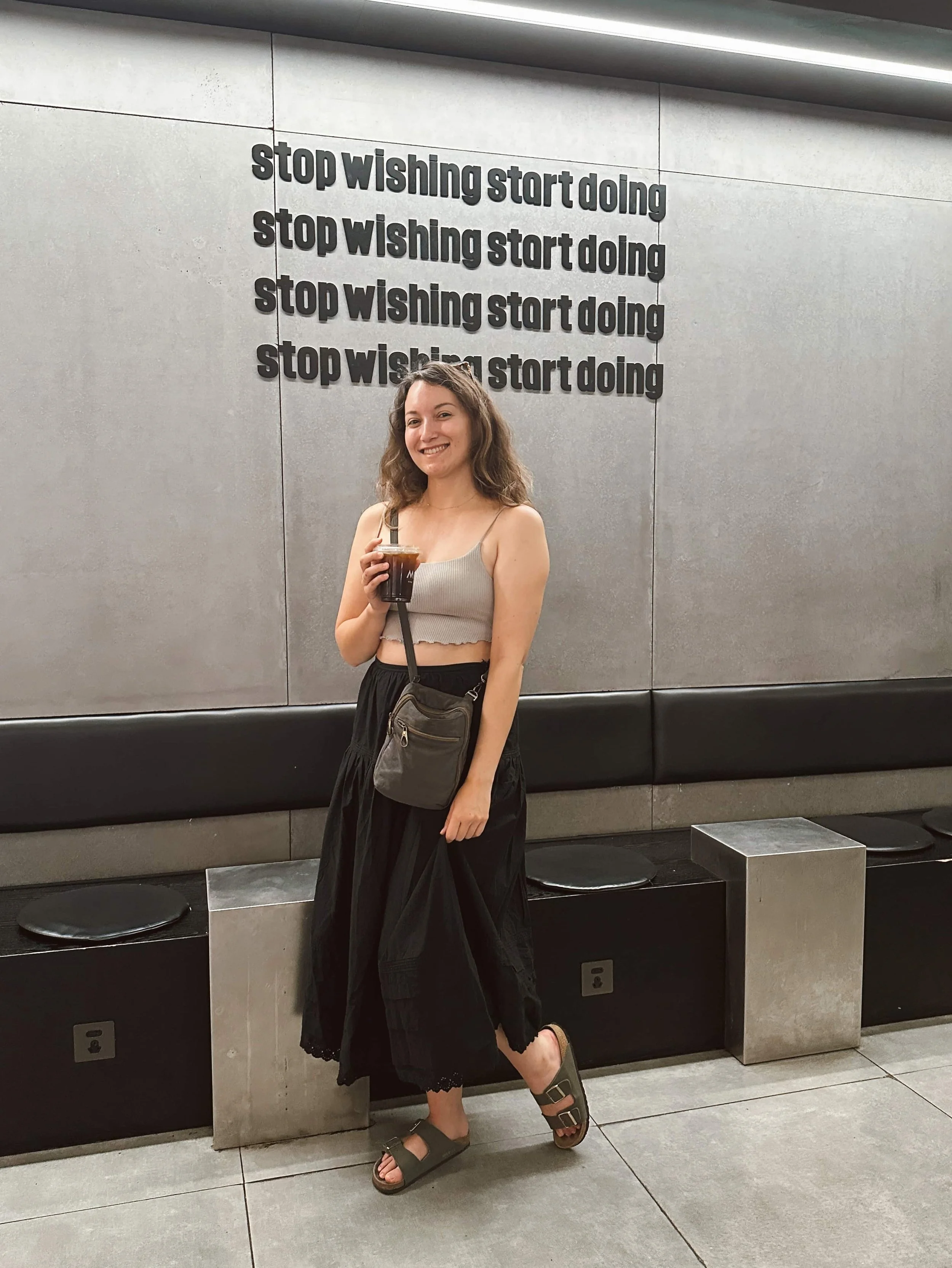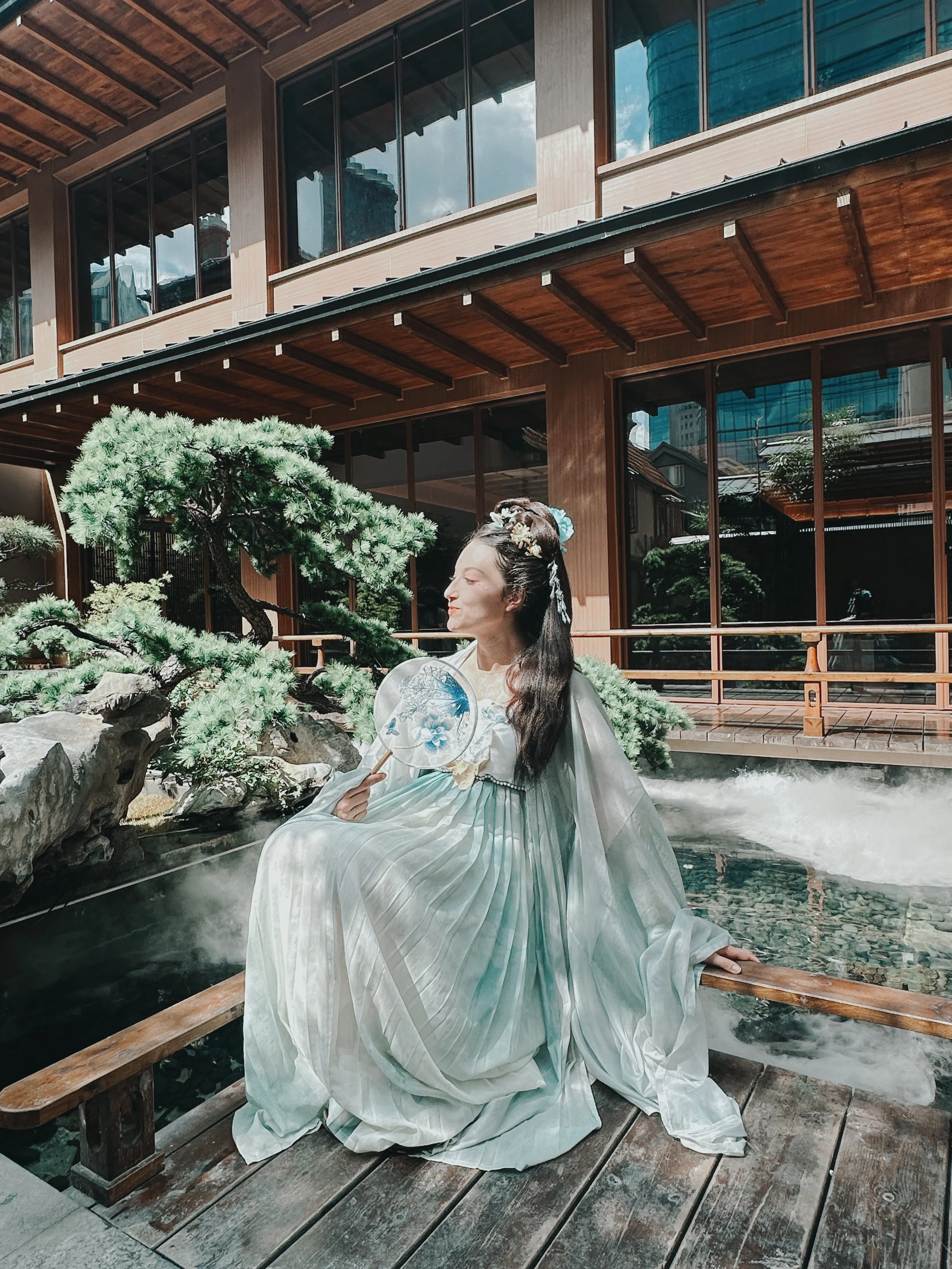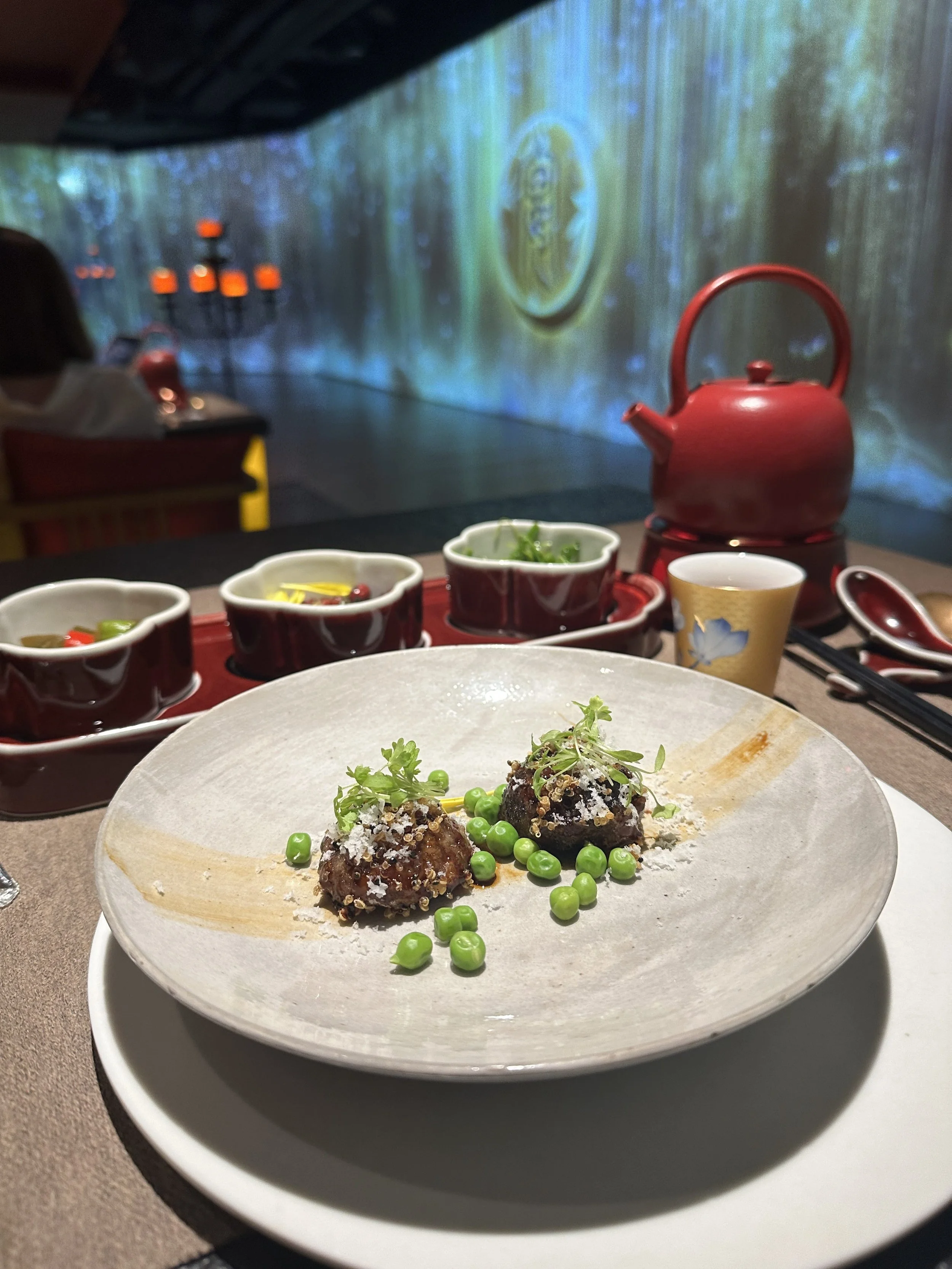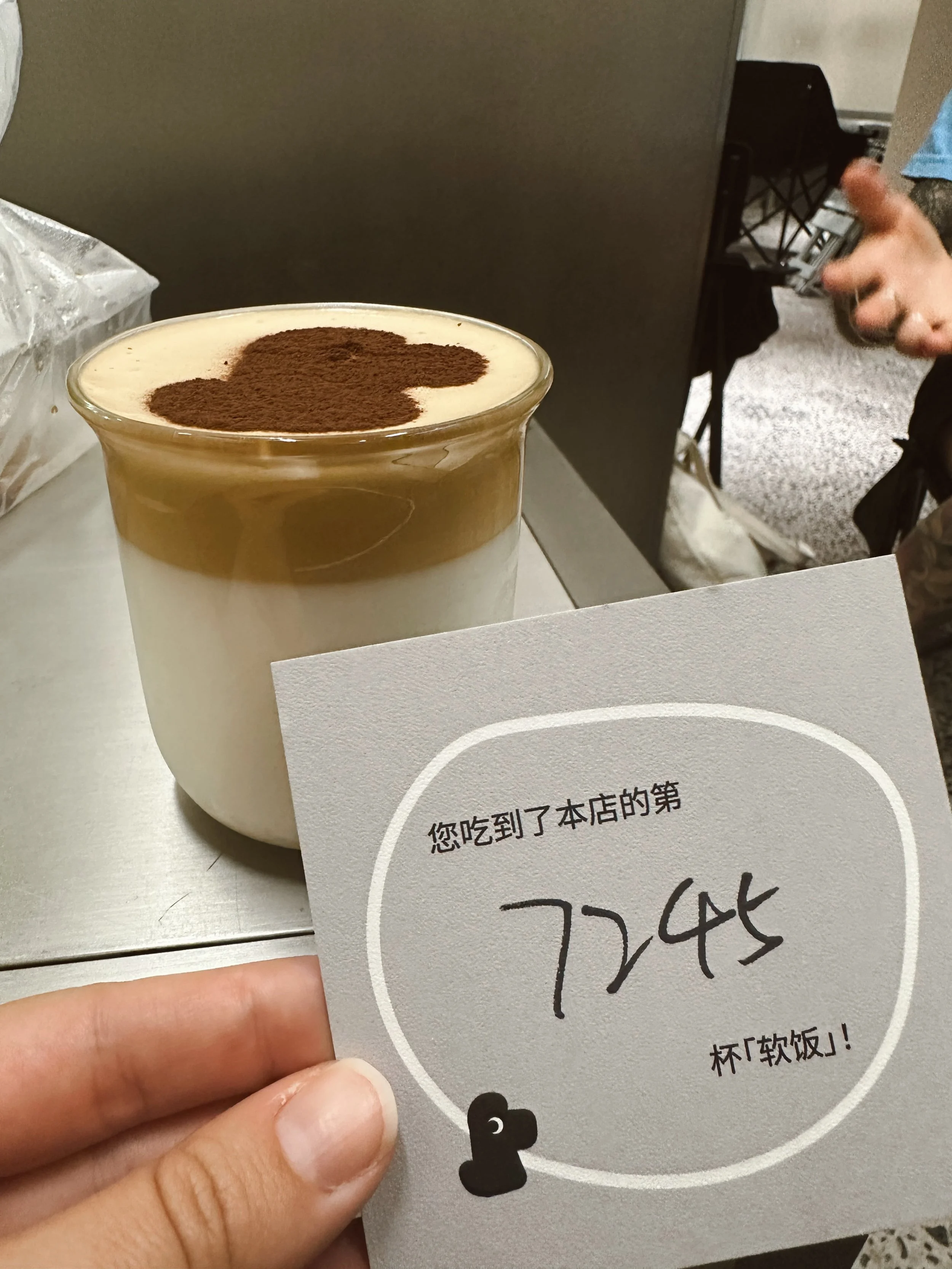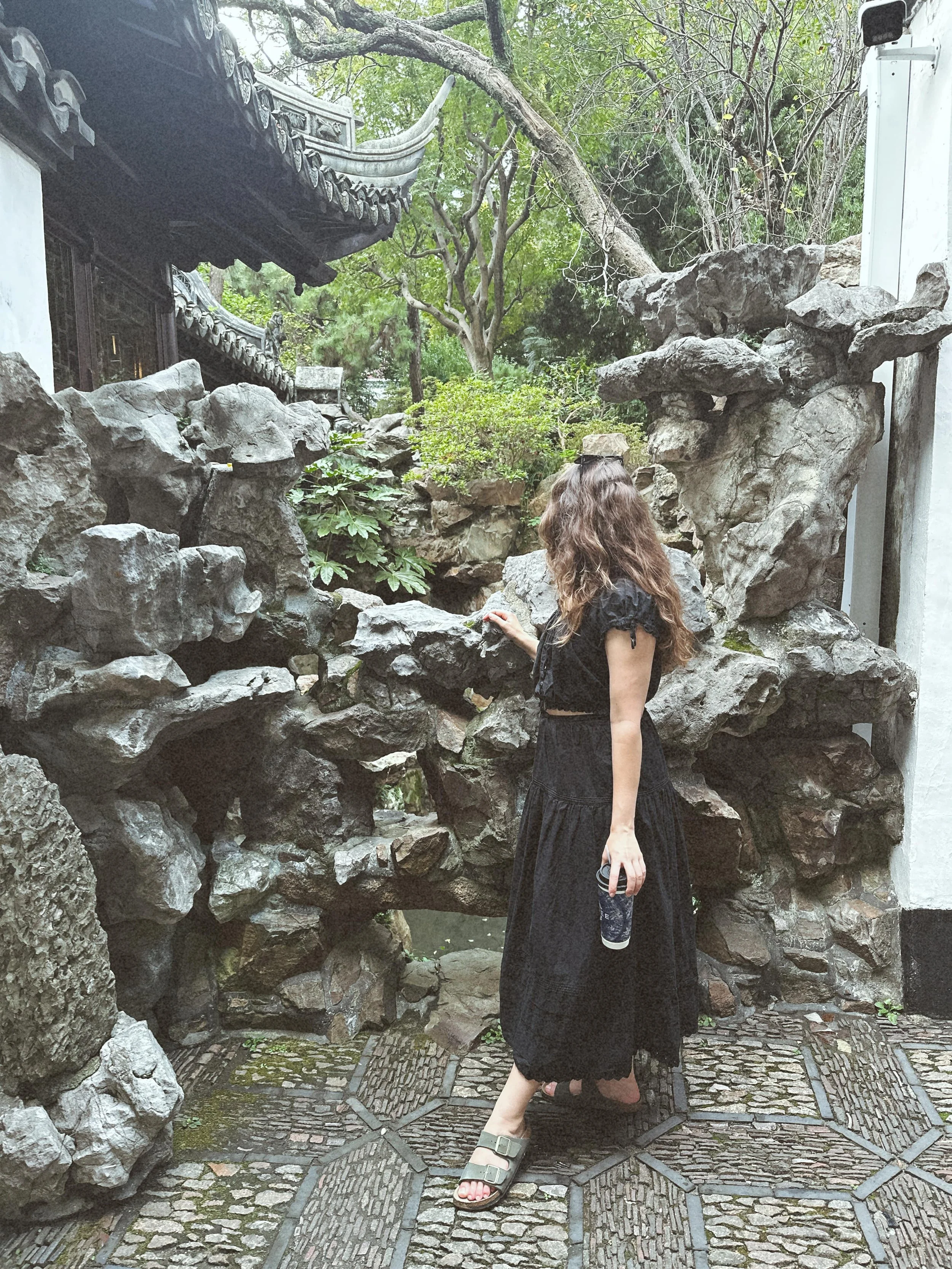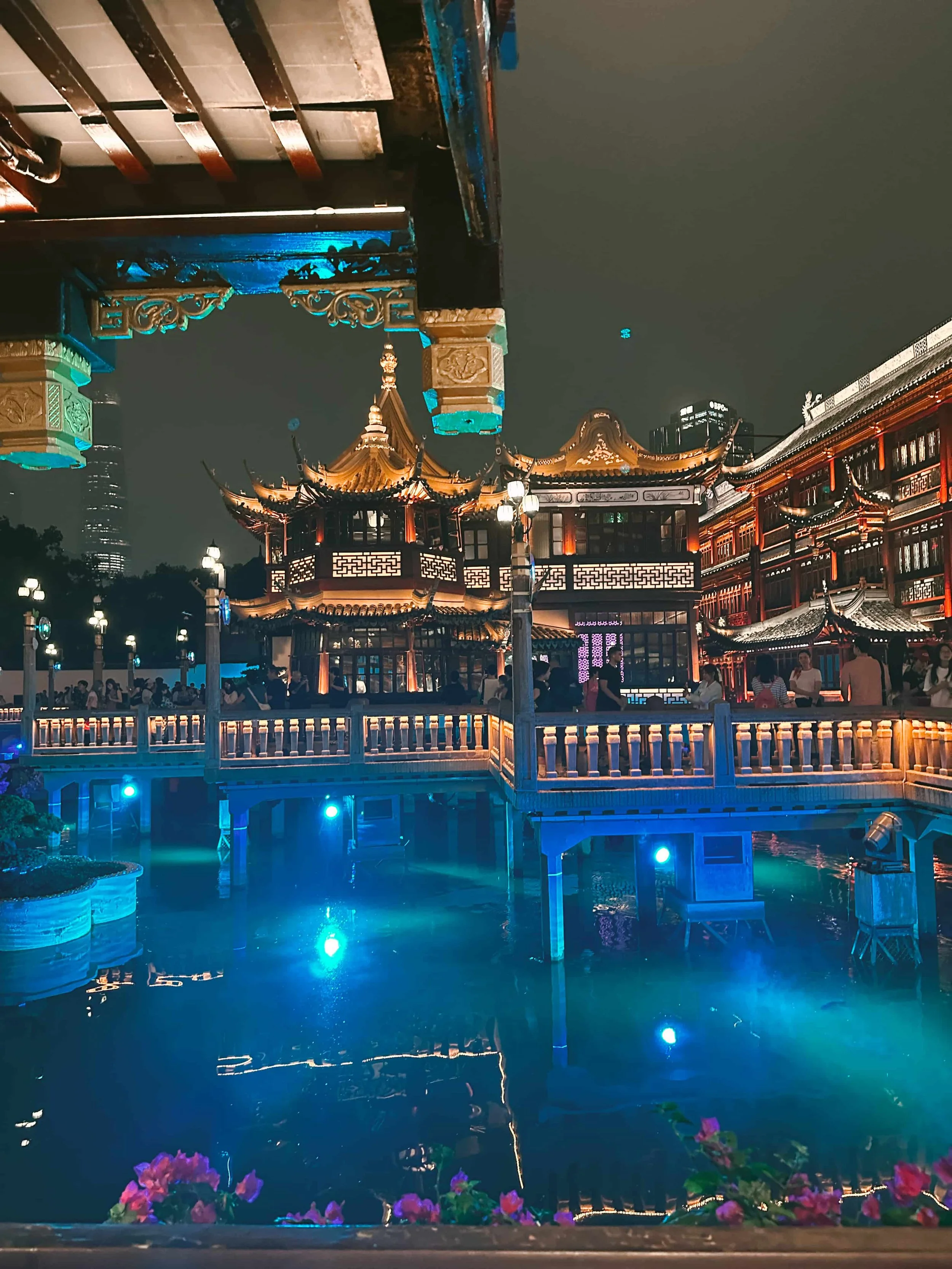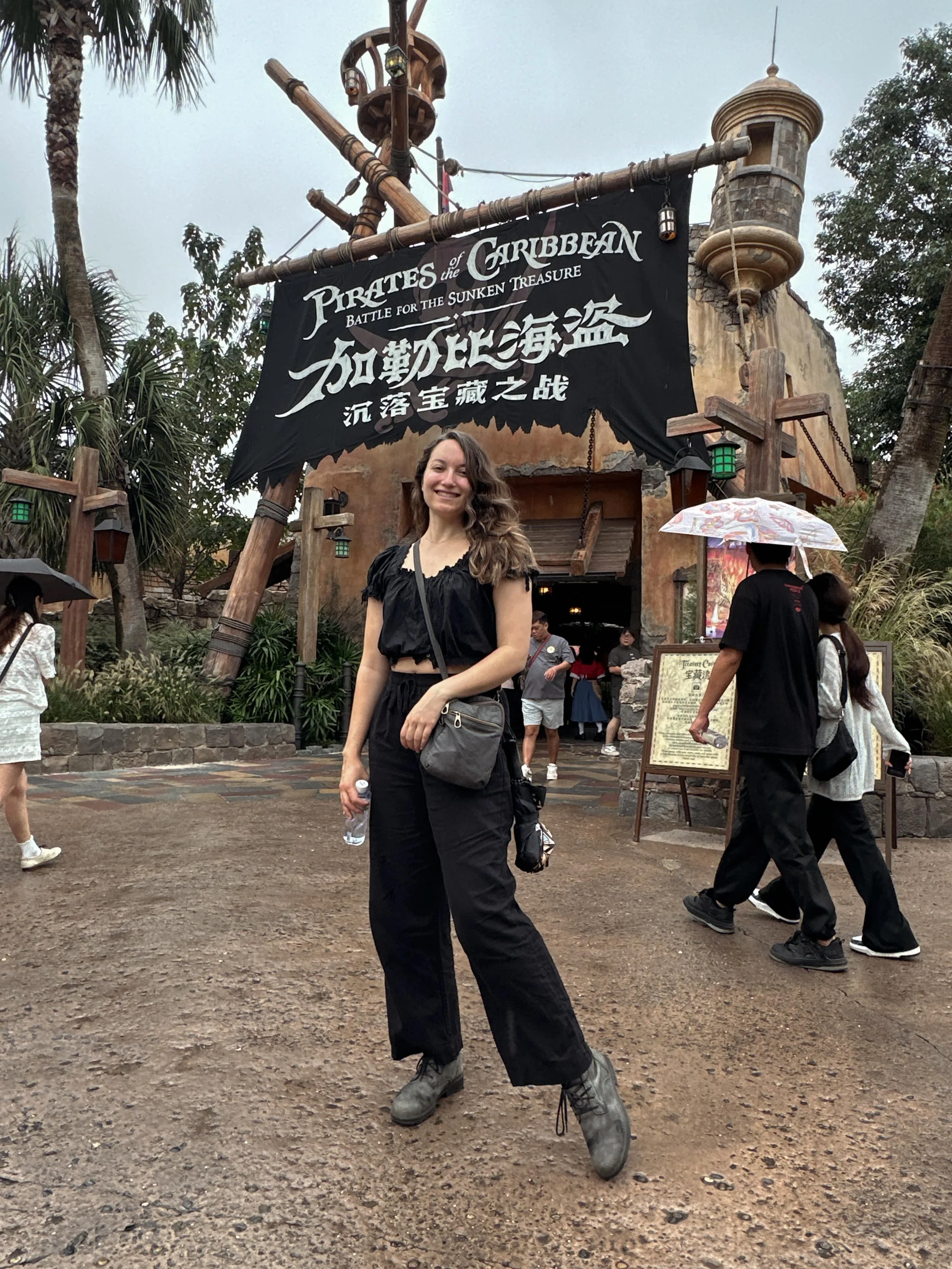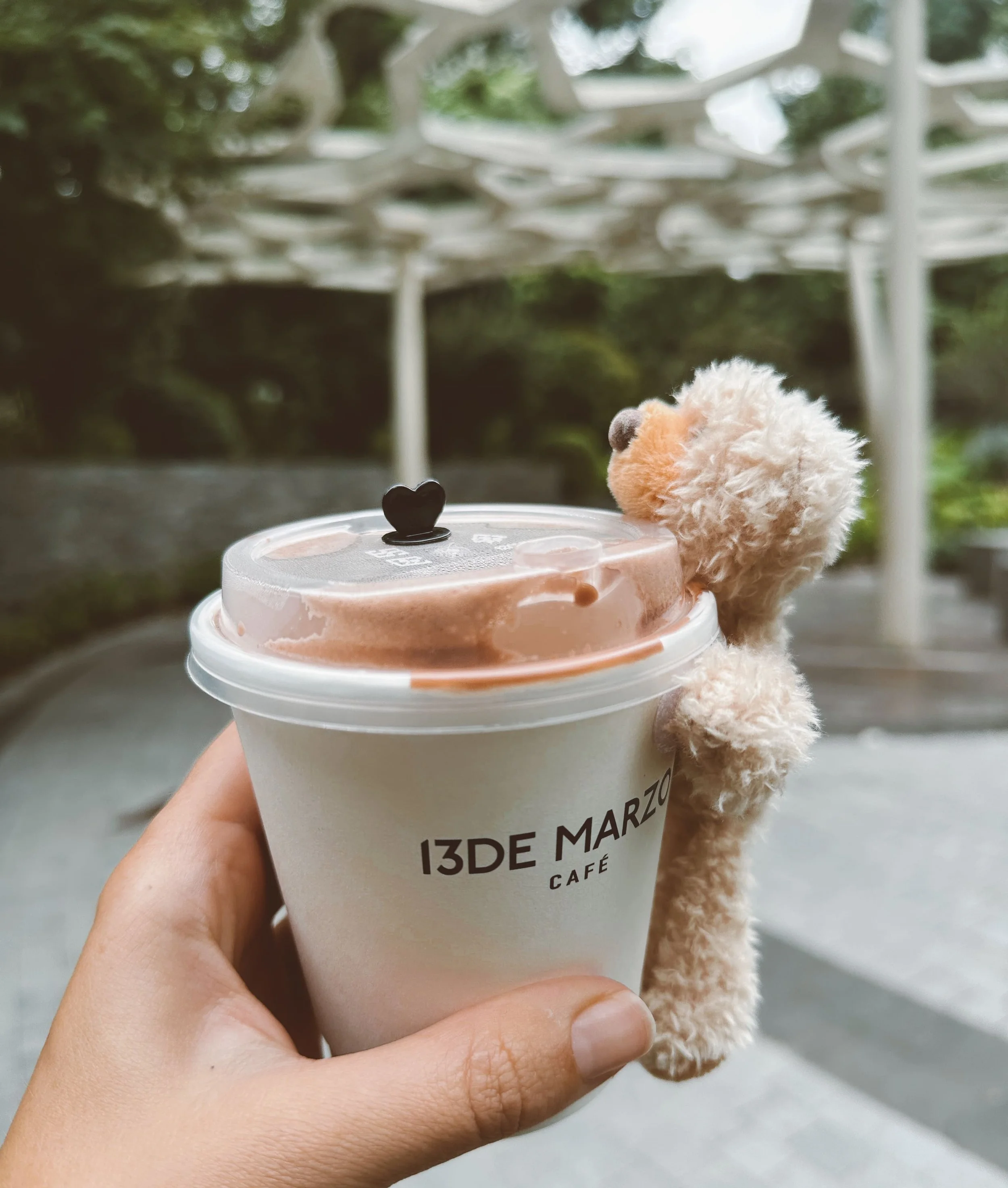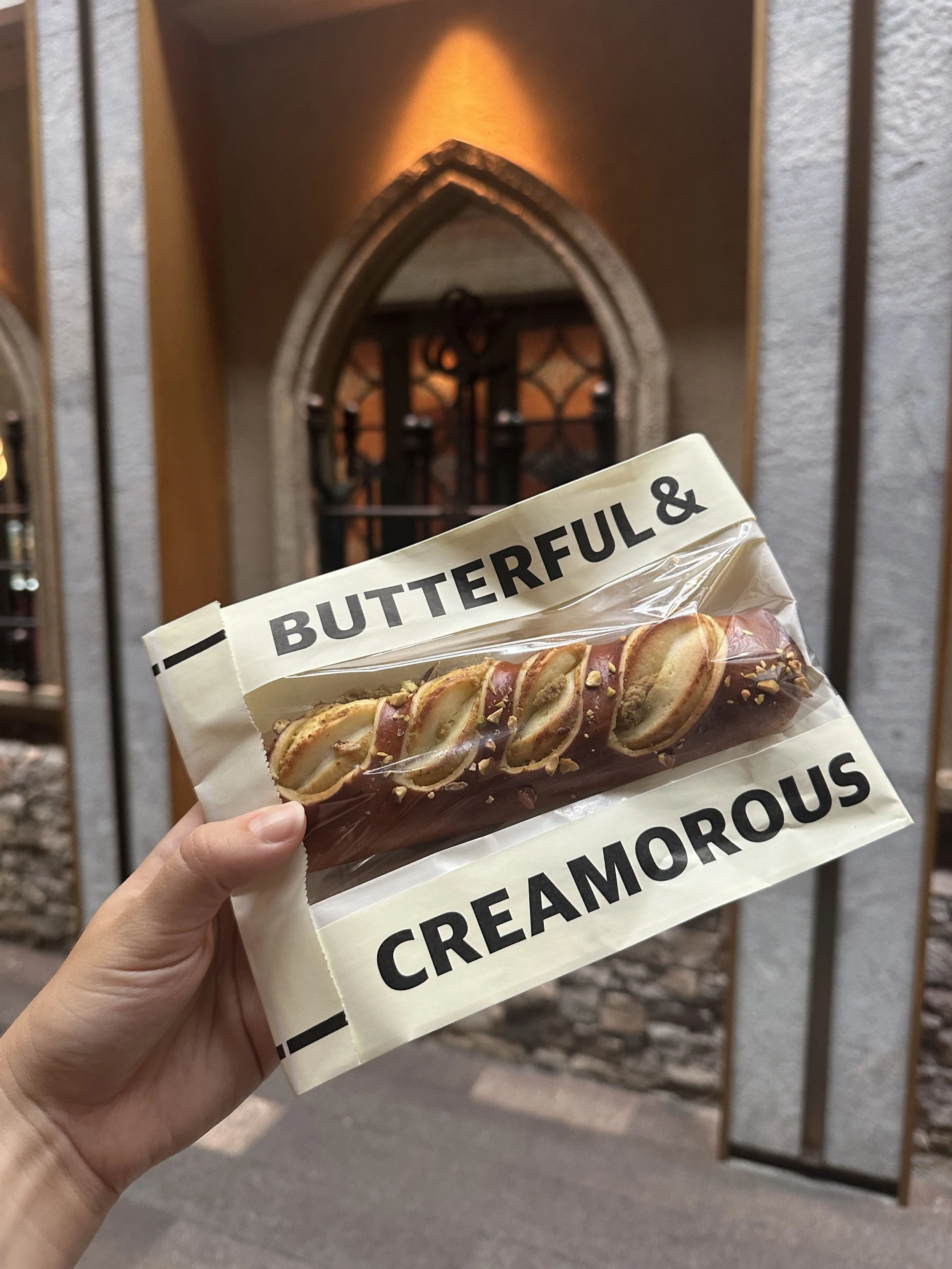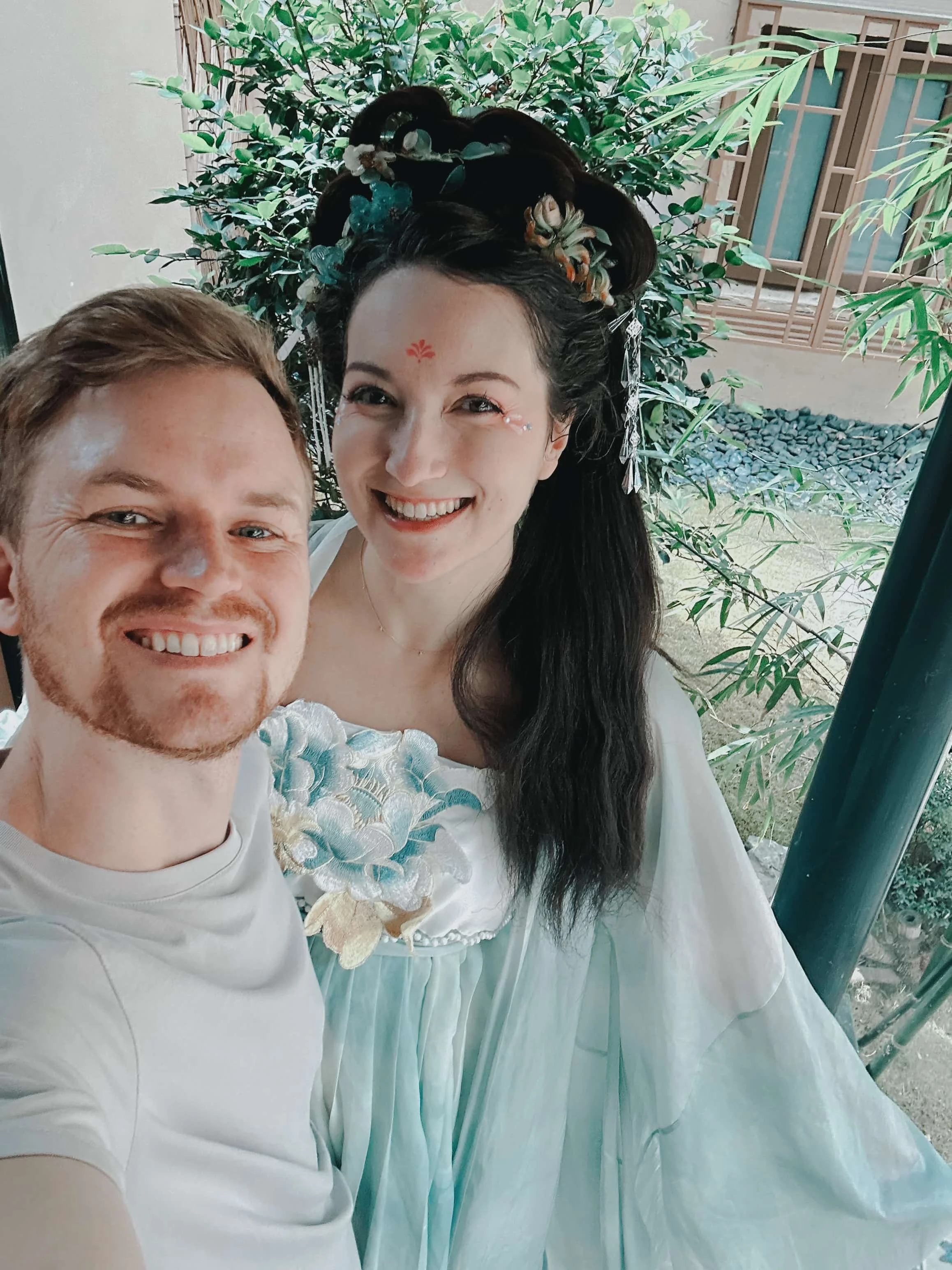Travel Guide: Shanghai, China
Walking along The Bund in Shanghai, China
I’m writing this from a flight out of Shanghai, watching the skyline shrink through the window as we head to Chongqing — stop three on my month-long China adventure. I’m a tad salty that airport security just confiscated my phone chargers (apparently there’s a strict voltage limit on power bricks here), but no regrets. My suitcase is lighter, but my camera roll is full.
That’s the tradeoff I’ll take every time — because when you’re a freelance writer, the world becomes your office. This trip has been fueled entirely by my work as a ghostwriter, author, and Substack writer, and in between client calls and chapter deadlines, I’ve been running my writing job board ✍️ Make Writing Your Job — sharing the same kinds of high-paying freelance opportunities that fund adventures like this one. If you’ve ever dreamed of writing your way across the globe with nothing but a laptop and a carry-on, you’ll want to check it out.
But let’s rewind to Shanghai.
I came in expecting a sci-fi fever dream: robotaxis, AI assistants, maybe even a robot dog or two. What I got instead was something more subtle — and more surprising.
The city’s high-tech flexes were quiet (though a very polite room service robot did deliver takeout to our door), but the subway system? Genuinely stunning. Think glowing station tunnels, strong AC, easy transfers, and the kind of efficiency San Francisco can only dream about. Security checks before every entrance made it feel safe without being overwhelming.
Oh — and we took the maglev train to the airport, which hits over 300 km/h while hovering above a magnetized track. Floating to your gate? Peak Shanghai.
But my favorite moments weren’t the fast ones — they were the slow, low-stakes, this-is-why-I-travel ones. Like a quiet morning at M Stand with my laptop and a perfect croissant, followed by a mall crawl where I found the linen shirt of my dreams… and a bonus plush teddy bear hugging my iced coffee. (Ten out of ten serotonin hit.)
Shanghai’s food didn’t top what we had in Beijing, but the coffee scene absolutely carried. And when you combine that with world-class transit, walkable neighborhoods, and a kind of elegant energy that reveals itself the longer you stay — you start to get why this city leaves a mark.
So if you’re headed here next, I’ve rounded up all my tips, recs, and favorite finds — from the coziest cafes to the prettiest train rides — to help you plan your own unforgettable Shanghai stop.
Also if you’re unsure on how to get around China, don’t worry — I’ll be compiling an entire post on what to do (and not to do) for your China trip coming soon. And if you missed my Beijing post, you might have missed my section on all the things you have to do before traveling to China (visa, downloading Chinese apps to be able to pay for things, etc.) but I’ll get to writing a whole separate article for that as well soon enough. (So much to write about when it comes to visiting China!)
Where to Stay in Shanghai, China
At M Stand Coffee in the 1,000 Trees Mall in Shanghai, China
Let’s talk neighborhoods — because where you stay in Shanghai really shapes your experience.
I wouldn’t recommend our hotel, so I’ll spare you the name. We were told to stay in the “French Concession,” but here’s the thing: that’s not one tidy, charming block. It’s a sprawling region made up of multiple districts — some cozy and leafy, others… less so.
If you want walkable access to trendy cafés, boutique shopping, and quiet tree-lined streets, aim for areas west of the Bund — think Xuhui or Jing’an. These neighborhoods are packed with independent shops, speakeasy-style bars, and third-wave coffee spots, without the chaos (and tourist pricing) of the Bund. They also have better vibes than the hyper-commercialized mall zones or sterile hotel blocks.
The Bund is beautiful — and definitely worth a visit — but staying there means you’re surrounded by tour groups, overpriced hotel bars, and a lot of noise. Great for photos, not so great for actual rest or daily wandering.
My advice? Book something closer to Anfu Road or Wukang Road. You’ll be surrounded by bakeries, bookstores, and concept shops, and you can spend your mornings meandering instead of flagging down cabs. Plus, the subway is fast, cheap, and spotless, so you can zip around the city no matter where you base yourself.
Hotel prices are relatively affordable compared to the US, but this is one city where it’s worth paying a little more. Some of the more budget-friendly places have… character, but not in the charming way. Spring for something midrange or higher — even better if it includes a rooftop or spa.
Your future self (and your sleep schedule!) will thank you.
The Best 24-Hour Spa in Shanghai, China
One of my favorite rabbit holes to fall down while planning this trip? The world of 24-hour spas in Shanghai.
There are dozens. Maybe hundreds. Some look like Vegas. Some look like airport lounges. And a lot of them? Pretty mid.
After much research (and a few detours), we landed on what I now believe is the spa — the crown jewel of Shanghai spa culture: Qushui Lanting (曲水兰亭).
This place is opulent — in the high-key, jade-hued, caviar-buffet kind of way. And somehow, it still only costs $290 USD per person for an all-day, all-access experience that felt more like checking into a five-star wellness planet than booking a massage.
It’s tucked out on the west side of the city, but just a quick subway ride away. Here’s what you get for your twelve hours of bliss:
Gender-separated bathhouse zones with hot springs, saunas, and steam rooms
A 60-minute Chinese-style massage (more on that in a sec)
A buffet lunch that included unlimited caviar (yes, really)
Huge drink fridges stocked with free coffee, juices, and wine — and rice wine for the brave
A video game room with PlayStation consoles (we played Overcooked until our thumbs cramped)
Endless desserts, teas, and fresh coconuts
Multiple resting areas, including a movie room, quiet lounges, and a bar (some alcohol here costs extra)
Fancy Dyson-level hairdryers and makeup counters stocked with high-end brands
And — the best part — a silky set of matching spa pajamas you wear after showering and throughout the whole experience, including the massage
Let’s talk about that massage.
It’s not a Swedish melt-into-the-table kind of massage. It’s not a Korean scrub-your-soul-clean situation either. This is a Lanting-style Chinese massage, focused on pressure points and energy pathways. It’s intense. Occasionally painful. Kind of like being exorcised through your fascia. But I walked out feeling like a tension ghost had been physically evicted from my body, so… worth it.
And again, this was $290 per person for everything — including the meal, massage, endless drinks, coconuts, games, naps, pajamas, and various high-end beautification stations. If you’re from the U.S., you already know a single massage at a decent hotel spa can run you that much — without the caviar and coconuts.
You can also book extra massages or other services like foot massages, facials, or pedicures once you’re there — no reservations needed. We went on a Monday morning at 10 a.m. and had the place almost entirely to ourselves. Floating between hot springs and the game lounge in soft cotton pajamas with a coconut in hand? Absolutely one of the most surreal and delightful ways to spend a weekday.
If you only do one luxury thing in Shanghai — let it be this.
What to Do in Shanghai (Or: The Art of Doing Just Enough)
Attending the Gongyan Imperial Feast in Shanghai, China
Shanghai is one of those cities that feels both infinite and… oddly chill. We stayed for seven nights, which — to be honest — was a bit much. I’d say 3–5 days is the sweet spot if you want to see the sights without maxing out your step count or your dumpling tolerance.
That said, here’s what stood out — the hits, the surprises, and the slightly cursed detours:
1. Walk the Bund at Night (Yes, Even if It’s Crowded)
This is Shanghai’s showstopper — and for good reason. The contrast between the historical buildings on one side and the Blade Runner skyline on the other is pure cinematic gold. Everyone and their ring light is here, but grab a bubble tea and lean into the chaos. It’s worth it.
2. Dress Like Royalty, Eat Like Emperors: Gongyan Imperial Feast
One of the vegetarian courses of the feast
One of the most unexpectedly delightful experiences of the trip. We booked Gongyan Imperial Feast, which is part immersive theater, part fashion show, part fine dining event — all wrapped in traditional Chinese culture. You arrive, get swept into hair and makeup (optional but highly encouraged), then don a full Hanfu ensemble before sitting down for an 8-course meal and live performance.
Think dancers, musicians, projection mapping, fog machines, and moments of comedy that transcend language. It’s around $100 USD per person, with a small upcharge for the costume and glam. Vegetarian meals are available (and fantastic) if you message them ahead of time. Book via WeChat — use the translate button or Google Translate your way through. We snagged the last two seats, so book early for better views. Pro tip: go during the day if you want the best photo ops by the bonsai courtyard and misty pool.
3. Lost Plate’s Brunch & Coffee Tour
This was one of our favorite ways to explore a new part of the city. Our guide, Emma, led us through fried dough fever dreams (one version stuffed with scrambled eggs — divine), a tiramisu latte numbered by the café owner, and not one but two dog-themed coffee shops — including one where Diamond the Dog lounges in a rhinestone collar while guests sip cappuccinos from cups with his face on them.
We also sampled soup dumpling and fresh soy milk while wandering charming neighborhoods we wouldn’t have found on our own. Their dinner tour, on the other hand, had very limited vegetarian options — I’d skip it unless you’re an omnivore.
4. Mall Culture: Surprisingly Good (With a Few Caveats)
Locals may roll their eyes at tourists heading to 1,000 Trees Mall, the wildly Instagrammable structure built to resemble a hanging garden — and yeah, it was basically a ghost mall with half the stores empty.
But head over to Anfu Road or the Butler Mall cluster instead (note: double-check names in Chinese apps). We wandered in and out of malls and stumbled into several chic concept clothing stores, and a killer Vietnamese spot called Pink’s that was heavy on fresh veggies and vegetarian-friendly dishes — a rare find in meat-heavy Shanghai. We also loved the mall by the bear coffeeshop 13 de Marzo, I don’t know the name but here’s the A Map link. This mall felt like LA’s The Grove — very high-end stores, luxury art exhibits inside places like Gentle Monster.
If you need a day to caffeinate and shop your way through air conditioning, this is your route.
5. Tianzifang: Cute, Crowded, Keychain Central
This arts district and winding section of alleyways is a bit of a tourist trap — but a charming one. We picked up Labubu keychains as kitschy-cute gifts, wandered narrow alleys strung with lanterns, and found a decent mall right off the subway stop. Worth a walk if you’re nearby or looking for souvenirs that aren’t “I ❤️ Shanghai” magnets.
6. Yu Garden + Night Market Vibes
The Yu Gardens are ancient and beautiful, with winding stone paths and intricate rock formations that feel like the backdrop of a Zhang Yimou film. But when you exit? You’re spit out into a neon-lit street market lined with food stalls, dumpling joints, and flashy souvenir shops.
Kyle tried the famous soup dumpling you drink with a straw (a bit overrated, but fun), we stumbled across shockingly good gelato, and walked through the fog-machine-heavy streets that somehow felt like a cross between Epcot and Blade Runner. The food here didn’t blow us away, but the night lights are worth the stroll.
7. Shanghai Disneyland
We had high hopes after visiting Tokyo DisneySea (which is god-tier). Shanghai’s version? Not quite. The Pirates of the Caribbean ride is the standout — an immersive, shipwrecked-themed boat ride made just for this park. The pirate stunt show was mildly cheesy but redeemed by impressive action scenes.
Vegetarian food was painfully scarce here (and in the surrounding area), so plan ahead. If you’re a Disney fanatic or traveling with kids, it’s a fun diversion. Otherwise, you’re not missing much.
8. The Bund Underground Tunnel: Chaos in a Capsule
This is a short, very touristy light-show tunnel ride that shuttles you under the river. Feels like something out of 1990s Tomorrowland, and that’s exactly why I loved it. Don’t go out of your way for it, but if it happens to fit your route — it’s a weird little joy.
There was both a lot to do in Shanghai, and not a ton to do in Shanghai. We stayed for 7 nights which ended up feeling like quite a lot, so I’d recommend 3-5 nights depending on the length of your trip.
The Best Coffeeshops, Boba Tea, and Milk Tea Shops in Shanghai, China
Let’s get this out of the way: Shanghai’s coffee scene is elite. World-class. Possibly even best-in-the-world status. (Sorry NYC. Sorry Paris. You had a good run.)
And I say that as someone who’s caffeinated their way across multiple continents.
Yes, Seoul has the density, but Shanghai has the drama. The espresso is strong, the packaging is unhinged (in the best way), and every café feels like it’s auditioning to be the backdrop of your next viral Instagram post or indie short film. Even the chains here have something to prove — and they deliver.
Let’s start with my favorites:
🐻 13 de Marzo – Bear Coffee
Yes, I came here for the bear. And no, I’m not sorry.
This concept café-slash-concept-store serves up drinks hugged by a plush teddy bear. My inner child screamed. My outer adult politely took photos and ordered a hot chocolate — which was fine, not transcendent, but who cares? You’re here for the vibe. The line can be long, so order in advance on their app if you can.
Come for the bear, stay for the absurdity, leave with a fuzzy serotonin souvenir.
☕ M Stand – Chain of My Caffeinated Dreams
If you drink coffee for the flavor and not just the aesthetics (guilty), M Stand is your best bet. Their flat white was consistently smooth across multiple locations, and their salted cheese espresso was shockingly good — until it mysteriously vanished from the menu halfway through our trip (RIP).
Also worth noting: they serve pizza by the slice, which felt oddly rebellious in a city where dairy is rare. Shanghai’s gonna Shanghai.
obsessed with the insane translations here
🥜 Metal Hands – Pistachio Realness
This tiny artisan café serves a pistachio-rimmed espresso drink that blends nutty milk with a bold shot of coffee. It’s a statement drink, and it lives up to the hype. The space is tight (think industrial chic with scrolls of calligraphy on the walls), so don’t expect to camp out with a laptop — just sip, snap a photo, and move on with your life feeling a little more fabulous.
And now, for the tea lovers (and all boba-adjacent beverage chasers), a few favorites from our time floating between jelly layers and milk foam clouds:
🐉 Chagee – My Ride-or-Die Milk Tea
If this blog post accomplishes anything, I hope it’s to convince the tea gods at Chagee to expand internationally. Preferably to San Francisco. Or maybe my apartment.
Their Jasmine Cheese Milk Tea is crisp, balanced, and endlessly drinkable — like if perfume became dessert but in a good way. Our Chagee order was translated super oddly, but in English it was written as “light cause (caffeine it has a sleep crescent moon for the image) — boy a absolute string.” It costs roughly $2 and it's magical.
We had Chagee almost every afternoon. You’ll find locations everywhere, which is excellent because once you try it, you’ll be hooked.
🌽 Ah Ma – For the Bold Palate
Ah Ma was a recommendation from a local friend who knows what’s up. The queue? Roughly 30–40 minutes via mobile order. The drinks? Wild. Think coconut jelly, sweet corn, and other unexpected ingredients that toe the line between “refreshing” and “should this be a soup?”
Not my favorite, but an absolute must-try if you’re curious and like your teas on the experimental side.
Whether you’re into boba, artisan lattes, or milk teas so beautiful you hesitate to sip them — Shanghai will keep your cup full.
Where to Eat in Shanghai, China: Best Restaurants and Bakeries
I’ll be honest: Shanghai surprised me — and not in the way I was expecting.
After stuffing myself with jianbings and old Beijing noodles in the capital, I landed in Shanghai ready to eat my way through the city… only to find that many of my go-to comfort foods were nowhere in sight.
No breakfast crepes sizzling on street corners. No thick, hand-pulled noodles drenched in soybean paste. And as a vegetarian? Things got even trickier.
If you’ve traveled in Seoul, you know the vibe: beautifully designed restaurants with stunning menus — none of which you can eat. Shanghai echoed that same energy. We were turned away from more restaurants than I’d like to admit, with hosts politely (or sometimes blankly) letting us know that there were zero meatless options.
But! All is not lost.
While it took some hunting, I did find a handful of spots that were actually vegetarian-friendly — and not in the sad salad or overpriced smoothie kind of way. Also: the bakeries here? Absolutely delivered. Think flaky, buttery, gorgeously packaged carbs that made up for more than a few dud dinners.
So, here’s my short but mighty list of where to eat in Shanghai if you’re vegetarian, love pastries, or just want something legitimately good:
🥖 Butterful & Creamorous
This sweet pretzel roll from Butterful & Creamorous was amazing
Yes, it sounds like something out of Willy Wonka, but this upscale bakery is the real deal. Imagine layers of laminated pastry that practically melt into your fingers, with fillings that range from molten cheese to yuzu cream. It’s fancy, but it doesn’t take itself too seriously — and it’s one of the few places in Shanghai that made me gasp out loud (in a good way).
🥐 Our Bakery
A modern, minimal space with serious pastry credentials. Their coffee is solid, and the croissants and sourdough-based treats feel like they were smuggled in from Copenhagen. Great spot to post up for a midday reset.
🌿 VegeGood
If you’re vegetarian and craving something nourishing (or just hot food that isn’t soup), VegeGood is your best bet. The menu is thoughtful and filling, with seasonal produce and bold flavors. It’s not trying to imitate meat — just doing veggies well, which is rarer than you’d think.
🍜 Pink’s – Vietnamese with a Twist
Located near one of the cooler mall clusters off Anfu Road, Pink’s was a godsend. I was desperate for vegetables and fiber by the time we found it, and the fresh herbs, tofu, and clean broth felt like a reset button on my digestive system. Plus: it’s vibey, stylish, and still affordable.
Trains > Planes for Travel to Shanghai, China
If you can take a train in China, I’d recommend taking that over a plane for multiple reasons. One of those reasons is the literal 45-minute long in-person infomercial we got on our domestic flight to Chongqing (happening now, actually!) where the volume on the intercom is turned up to the max so sleeping passengers can’t ignore it (and noise-cancelling headphones are no match) and flight attendants show different products you can buy. I know America gets a bad wrap for trying to sell things everywhere, but this was just on another level.
Foreigners also obviously can’t use in-plane wifi here, whereas I was able to hotspot on the train pretty easily. And the train let me keep my phone charging bricks ❤️
So if you can, book a train for inter-city travel. But some destinations might be too far and require you to hop on a flight, and I wish you good luck with that.
Final Impressions of Shanghai: Style, Scale, and Surprises
Kyle and I before heading into the Gongyan Imperial Feast
Shanghai is a city of surfaces — polished ones, mostly.
It’s trendy. It’s fashion-forward. It’s absolutely obsessed with coffee. It’s also not very green (in either the ecological or vegetarian sense), especially when compared to Beijing’s parks and plant-based eats. But once I adjusted my expectations, I started to see Shanghai for what it is: a city built to impress, powered by scale, and shaped by contradiction.
Let’s start with the vibe.
People dress well in Shanghai. Outfits are curated. Cafés are engineered to be photogenic. The aesthetic ambition here is wild — you feel it in the way coffee shops style their cups like fashion accessories, or how a simple tea stand somehow comes with LED mood lighting.
I’d expected tech to be front and center — robotaxis, delivery bots, a Jetsons-level of urban futurism. That’s not what I found.
Instead, I heard an interesting theory: Shanghai doesn’t lack the tech — it limits the rollout to preserve jobs. And based on what we saw, that checks out. This is a city with layers of staff — like a matryoshka doll of service roles.
At one vegetarian restaurant, one woman’s full-time job was to open the door and help place dishes on your table (after they’d already been handed off by a different server). At a gas station, we heard about a ten-person crew whose roles included cleaning the car nozzle with a toothbrush.
And don’t even get me started on Gongyan. That immersive imperial feast was an operation worthy of a movie set — hundreds of performers, stylists, servers, and staff moving in synchronized hospitality. It was surreal in the best way. Even the spa had attendants who led you from room to room, pressed elevator buttons for you, and folded your pajamas while you were still wearing them (almost).
Economies of scale are very real in Shanghai, and the effect is mesmerizing.
Still, the city surprised me in ways I wasn’t expecting. Compared to places like San Francisco, it felt less automated. You won’t find robots zipping around public spaces or autonomous vehicles roaming the streets. And despite the ultra-modern skyline, there’s a Western gloss over much of the cultural presentation. Even locals told us Shanghai feels “too Westernized” to reflect China’s deeper traditions.
But what Shanghai does offer is a stylized preview of a globalized future — where East meets West in a hyper-curated, café-coded dream of modern life. It’s clean. Convenient. Surprisingly affordable. And easy to navigate if you know what you’re doing (or if your WeChat isn’t glitching).
Would I go to Shanghai for “authentic” culture? No. But I’d go to watch how style, speed, and structure collide in real time.
Next stop: Chongqing — China’s so-called “cyberpunk city.” I’ll report back soon on whether the future I was looking for is waiting there.
Want to Become a Writer and Travel the World?
For the past 5 years, I’ve been able to travel the world and spend my weeks bouncing from spas to banquets to food tours while using my writing to fund my adventures.
Want to become a freelance writer or pitch your personal essays or articles and get paid by publications? Or maybe you want to get paid by a grant, contest, or residency to live somewhere unique and get paid to work on your own creative projects?
Over at ✍️ Make Writing Your Job, we’ve built a writing job board to help you get hired and funded for your writing.
Subscribe now for just $15/month to get our daily (5x/week) writing job board as well as all of our other awesome features, such as…
✍️ The Writing Job Board — updated 5x/week with high-paying freelance and ghostwriting work
⭐ Featured Jobs — exclusive roles from clients who post directly to our board (and often nowhere else)
📬 Pitch List — 2x/week newsletter of fresh pitch calls, open submissions, and editors looking for your ideas
🌍 Grants, Residencies & Contests — 1x/week roundup of opportunities that pay you to write, travel, and create
⚡️ New! Job Hunting Assistant — an AI-powered tool that helps you filter listings and find your next dream client even faster
🧠 ClassStack — live classes + our replay library
💬 Subscriber Chat — our private community where our curators drop fresh jobs, and our writers swap wins and advice daily
📰 GuestStack — our $1/word commissioned essay column (and your chance to get published + paid)
Basically, everything you need to make writing your job. See you inside!
